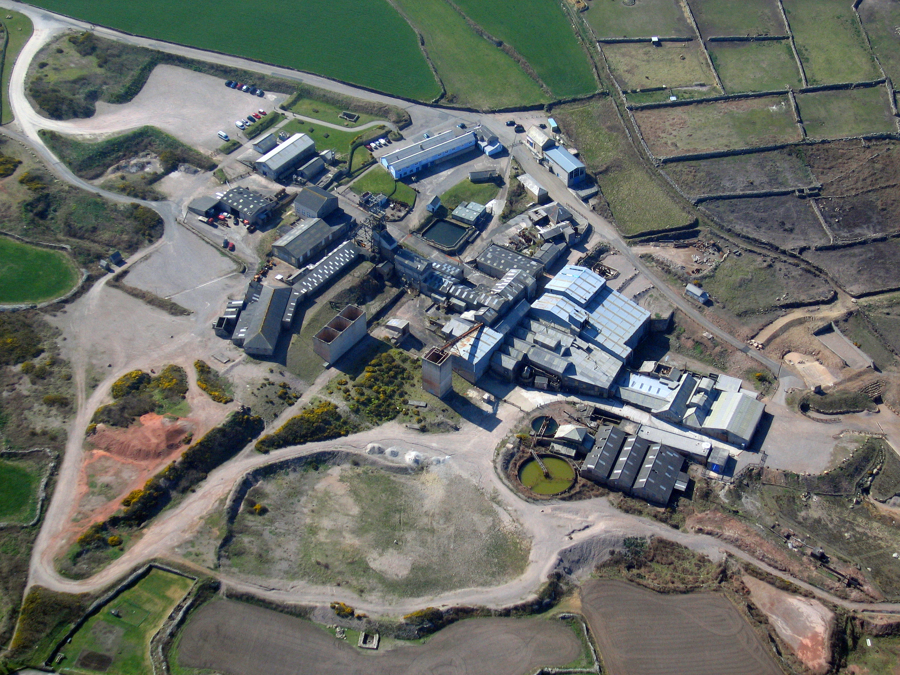(2007-2008) The Geevor Project
Geevor, the only mine in the St. Just Mining District to survive beyond 1930 became the economic mainstay of the local community for many decades, evolving and developing all the while, and though a bright future and further expansion were planned during the late 1970s, its end became inevitable following the International Tin Crash in 1985, the site finally closing in 1991 in the face of continuing uneconomically low international tin prices.
At first it seemed that Geevor would be quickly obliterated, its machinery sold off for scrap, its buildings demolished, and the site levelled and forgotten, but the site was saved from the scrapmen in 1991 through its purchase by Cornwall County Council in recognition of its unique importance to the County. It has been operated as Cornwall’s largest and most authentic mining heritage site since its reopening in 1993, for the past few years being managed by a local charitable trust – Pendeen Community Heritage. The site attracts a large number of visitors, keen to explore this conserved Cornish tin mine, see the impressive range of mining machinery still on site and experience the working environment of early miners in the Wheal Mexico Shallow Adit.
However, many of Geevor’s buildings had received no significant maintenance whatsoever for many decades. The extensive mill and satellite buildings were becoming increasingly derelict and dangerous, and the asbestos content of their roofing sheets no longer met modern safety standards
The museum and other existing interpretation facilities, set up on a shoe-string budget in 1992, were recognised as no longer suitable for a growing visitor market, whilst Geevor has been put forward as a World Heritage Site Key Centre – one of three locations in Cornwall and west Devon at which the newly-inscribed Site would have overarching interpretation. If Geevor was to have a future, extensive conservation works and brand new, professionally designed interpretation would be required.
In July 2007, successful applications for £3.4m million grants from the Heritage Lottery Fund (HLF) and Objective One allowed work to begin on a major conservation project to achieve these ends. South-west based Midas Construction were appointed as principal contractors, the works are being supervised by Stratton and Holborow of Exeter, and Cornwall’s Historic Environment Service are providing a specialist Historic Building Consultancy, given that the whole of the site is a Scheduled Monument.
Many of the works involved are straightforward, though on a massive scale – the large 1980s extension to the mill had originally been clad and roofed in steel sheeting which had not performed well in the salty atmosphere experienced on this coastal site, and which needed complete replacement. On the whole of the rest of the mill and surrounding buildings, cement-asbestos roof cladding had reached the end of its life and hundreds of deteriorating roof sheets had to be replaced with modern, safer equivalents. Other buildings on the site have been spruced up with timber repairs, reglazed in polycarbonate for safety reasons, repainted and provided with power supplies meeting modern standards. Specialist contractors and the highest quality materials have been used throughout to ensure that the works will ensure a long future for the site, whilst work specifications have been carefully scrutinised to make sure that they are appropriate and sustainable.
However, some buildings posed rather more complicated challenges. The miners’ dry (or change house) had been built of a poor-quality mass concrete reinforced with wire rope, old drill steels and whatever else had come to hand. This had not stood the test of time particularly well, and if it was going to survive would need the application of some radical conservation techniques, as with the 1930’s concrete ore bins, where airborne salt had caused advanced corrosion to its steel reinforcing, leading to extensive structural damage. The site’s two arsenic calciners required extensive decontamination before building contractors were allowed anywhere near them, and both would need new scantled slate roofs and repointing. The Project has therefore drawn in a wide range of specialist contractors and used innovative solutions to the conservation of some particularly difficult problems.
The other major element of the project was the creation of a brand-new museum of hard rock mining on the site. Rather than constructing a new building from scratch, the decision was taken to construct the new museum as a free-standing structure within an existing empty building – the Top Fitting Shop. From the outside, this building will look almost unchanged – inside, it will provide a full range of modern interpretation facilities on a number of floors, allowing the explanation of the geological background, technical and social history of Geevor in ways which will be accessible to a wide range of visitors.
Work is now well under way and although Geevor is currently a flurry of activity with work in progress on many buildings, careful negotiations between the contractors, project team and the site managers have ensured that visitors can still explore most parts of the site. Indeed, the works have become very much a talking point and have added an unexpected angle to the visitor experience, and the site guides lose no opportunity to encourage repeat visits next year to experience the new facilities.
By late spring next year, then, the Project will be approaching completion, and a high-profile launch for the new museum is planned. Geevor’s days as an active mine may have finally come to an end, but the works currently being carried out will ensure that it will have a long and high-profile future in telling the story of this most quintessential of Cornish industries to local school children and visitors.
Adam Sharpe, 2008
